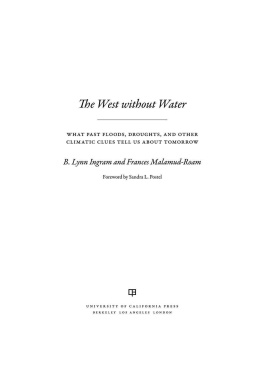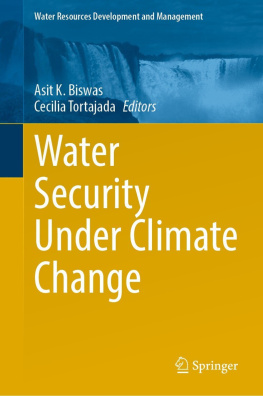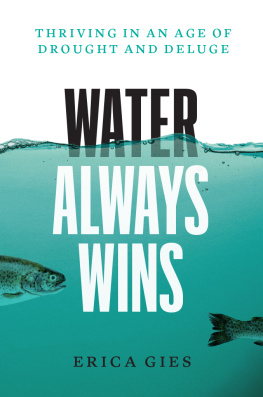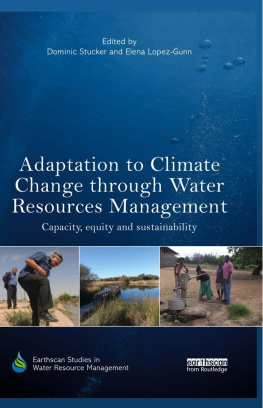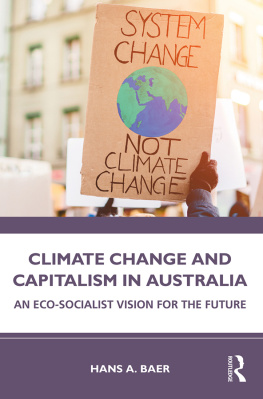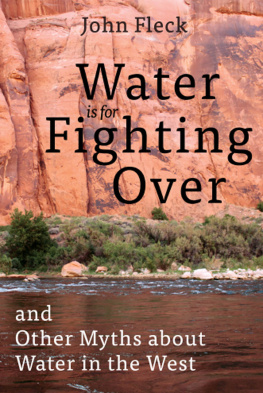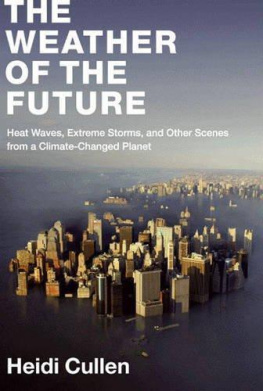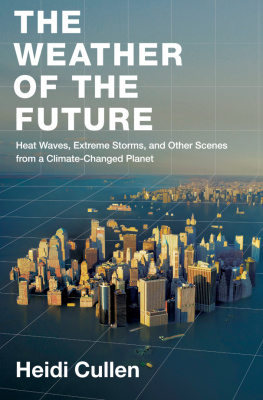
The West without Water
The West without Water
WHAT PAST FLOODS, DROUGHTS, AND OTHER
CLIMATIC CLUES TELL US ABOUT TOMORROW
B. Lynn Ingram and Frances Malamud-Roam
Foreword by Sandra L. Postel

UNIVERSITY OF CALIFORNIA PRESS
BERKELEYLOS ANGELESLONDON
University of California Press, one of the most distinguished university presses in the United States, enriches lives around the world by advancing scholarship in the humanities, social sciences, and natural sciences. Its activities are supported by the UC Press Foundation and by philanthropic contributions from individuals and institutions. For more information, visit www.ucpress.edu.
University of California Press
Berkeley and Los Angeles, California
University of California Press, Ltd.
London, England
2013 by The Regents of the University of California
Library of Congress Cataloging-in-Publication Data
Cataloging-in-Publication Data is on file at the Library of Congress.
ISBN 9780520268555 (cloth : alk. paper)
ISBN 9780520954809
Manufactured in the United States of America
21 20 19 18 17 16 15 14 13
10 9 8 7 6 5 4 3 2 1
The paper used in this publication meets the minimum requirements of ANSI/NISO Z 39.481992 ( R 2002) ( Permanence of Paper ).
For my loving family: Don, Daniel, Aaron, and Gene, and in memory of my father, Dr. Gerald Ingram
B. Lynn Ingram
For Anne
Frances Malamud-Roam
CONTENTS
ILLUSTRATIONS
FOREWORD
There is little doubt that humanity is in for turbulent times when it comes to water. Rising human demands against a finite supply are draining rivers, shrinking lakes, and depleting aquifers. In a world of seven billion people and growing, competition for water is intensifying to quench our thirst, grow our food, generate electricity, and manufacture all manner of consumer goods from cars to computers to cotton shirts.
On top of these demand-driven trends, the last century and a half of greenhouse-gas emissions and the concomitant rise in global temperatures are fundamentally altering the cycling of water between the sea, the atmosphere, and the land. Climate scientists warn of more extreme floods and droughts and of changing precipitation patterns that will generally make dry areas drier and wet areas wetter. In terms of water, the natural variability of the recent past will not be a reliable guide to the future. We have moved outside the bounds of normal to some new normal yet to be understood.
The recent decade of drought in the southwestern United States has thrown a spotlight on this regions vulnerability to the changes that lie ahead. From 2000 to 2009, the Colorado River exhibited the lowest ten-year-running-average flow of any ten-year period in the past century. During that time, the capacity of giant Lake Meadwhich stores water for nearly 30 million people and vast areas of farmlandfell from 96 percent to 43 percent. Climate scientists at the Scripps Institution of Oceanography have estimated that, within a decade, there is a 50 percent chance that Lake Mead will drop below the reservoirs outlets.
It is sobering to realize that this current southwestern drought pales (at least so far) in comparison to the mega droughts that have occurred multiple times in the pastand that could occur again in the future. The warm medieval drought during the middle of the twelfth century lasted two decades and was more severe and widespread than any other in the Southwest over the past 1,200 years. It almost certainly factored into the decline and ultimate collapse of the Hohokam, an enterprising people who settled and farmed in the valleys of the Salt, Gila, Verde, and other rivers of southern Arizona. The Hohokam thrived for a thousand yearsfrom 450 to 1450and then disappeared as a distinct culture.
Today, in our technologically sophisticated world, it is easy to believe we are immune to such an outcome. But we have not been seriously tested. For the past century and a half, humanity has enjoyed a relatively benevolent climate. During this time, we built big dams to tame the earths rivers, diverted flows from one river basin to another, drained wetlands for farming, and built oasis cities in the desert. We have so successfully masked aridity that we have become imbued with a false sense of security about our water future.
In this engaging and enlightening book, B. Lynn Ingram and Frances Malamud-Roam peer deep into the past through the lens of paleoclimatology to assemble evidence that can inform how citizens and leaders prepare for the new climatic regimes, including more intense droughts and floods, that almost certainly lie ahead for the western United States. The insights they uncover through this climate detective work lead them to a sense of urgency about taking action now to prepare for more erratic and extreme future conditions.
We may have other lessons to learn from the past as well. In order for our modern culture to enjoy a millennium of prosperity in the West, as the Hohokam did, we may need to embrace aridity and waters tightening limits and apply ingenuity and creativity to successfully live within those limits, rather than continue to mask and deny them.
Sandra L. Postel
Director, Global Water Policy Project
PREFACE
I love a sunburnt country,
A land of sweeping plains,
Of rugged mountain ranges,
Of droughts and flooding rains.
DOROTHEA MACKELLAR , My Country
A noise woke me in the middle of the night. I sat bolt upright in bed, my heart pounding, but heard only the sound of rain pelting the roof. Peering out my bedroom window, I saw a flashlight bobbing in the blackness of the backyard. My father, wearing a yellow raincoat, was pointing the flashlight toward the edge of our yard. The rain had been heavy on and off for weeks, soaking the ground, causing erosion, and undercutting our yard and those of our neighbors. Where once we had an ample yard, now only about fifteen feet of grass separated our house from the precipitous edge of the canyon. My father was discovering that one of our trees had vanished with the latest chunk of our property to disappear down the slope.
We lived on a steep mountain ridge in Santa Barbara, a small, beautiful city in Southern California nestled between the Santa Ynez Mountains and the Pacific Ocean, about sixty miles west of Los Angeles. By the end of that wet winter of 1969, several homes on our street had been largely destroyed. The house to our right balanced precariously on the edge of a newly formed cliff face, the former backyard entirely gone. Those neighbors, in an effort to save their home, shored up the eroding property by piling truckloads of large gray boulders onto the slope below. But nature finally won out, and they were forced to leave. The neighbors on the other side also lost most of their backyard; only their concrete swimming pool remained, fully intact, surreally suspended over the canyon.
Although our home was spared that year, the torrential rains saturated hillsides and triggered massive landslides and mudflows all across Southern California. Roads were transformed into rivers and flat lowlands into muddy lakes. The river flows in Santa Barbara doubled their normal levels. More than 100 people were killed, and hundreds of homes were destroyed. Southern California was declared a federal disaster area, and the National Guard was brought in to help with cleanup and restoration. As an eight-year-old, I had no way of understanding these events.
Pouring rain is a common occurrence during Southern California winters, but so are sunshine and heat. This hot-weather climate extreme is of greater long-term concern, because it is the cause of perennial scarcity of freshwater in California and the Southwest. Many of my childhood summers were spent in central Arizona on my grandparents ranch in the Sonoran Desert south of Phoenix, with more climate lessons. Central Arizona and Southern California are similar in climatedifferent ends of the same desert. The surreal temperature contrast between the cool of the air-conditioned houses and cars and the oven-like heat outdoors is still a vivid memory. Summer temperatures in the central Arizona desert are routinely among the hottest in the nation, commonly reaching 11520F, and, though I noticed the cotton and alfalfa fields, I never questioned how these crops could grow in a desert. Nor did I wonder how water could flow freely from faucets in the Arizona desert, just as it did in arid Southern California.
Next page
